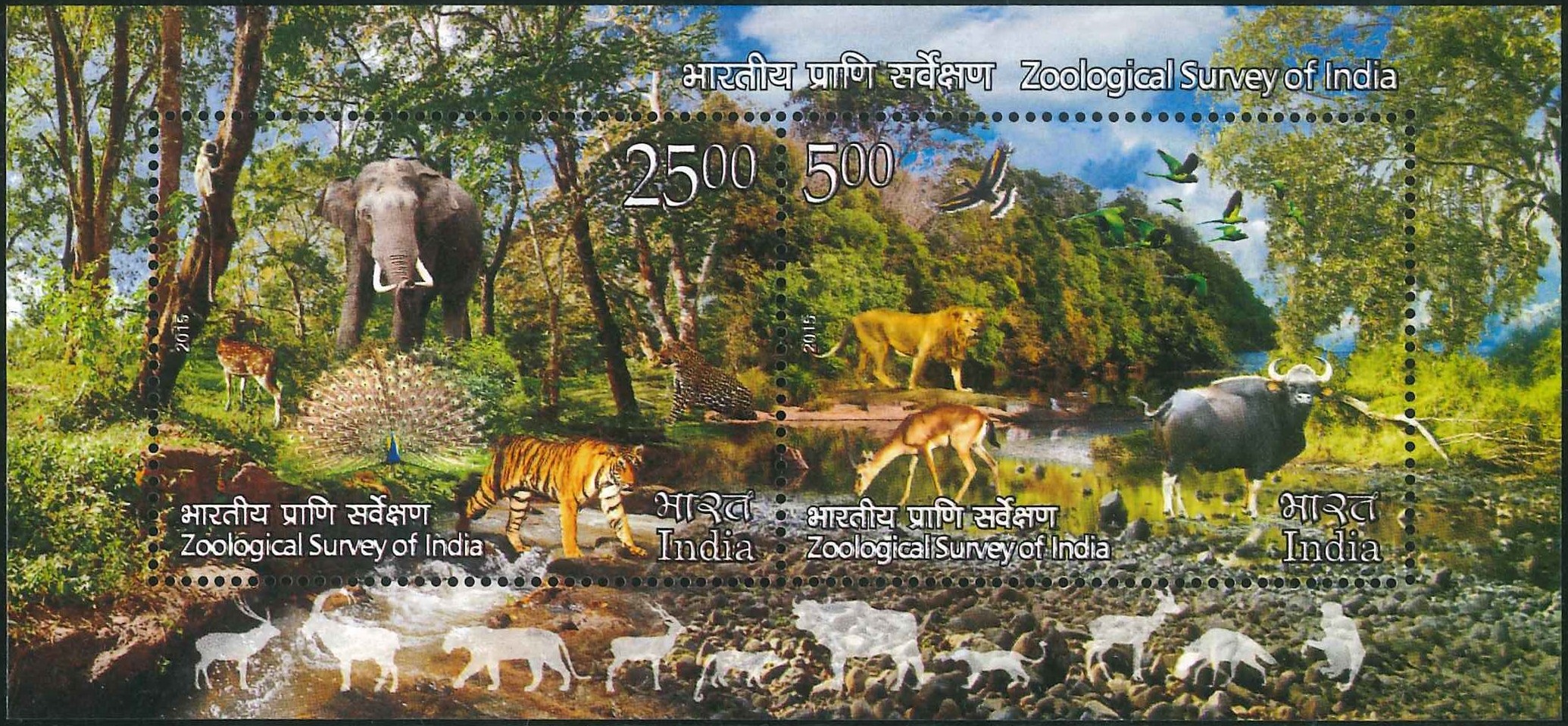
Zoological Survey of India
A Miniature Sheet consisting of 2 nos. of postage stamp on the 100 years of the Zoological Survey of India (ZSI), an Indian organization in zoological research and studies to promote survey, exploration & research of the fauna under Ministry of Environment, Forest and Climate Change, Government of India :
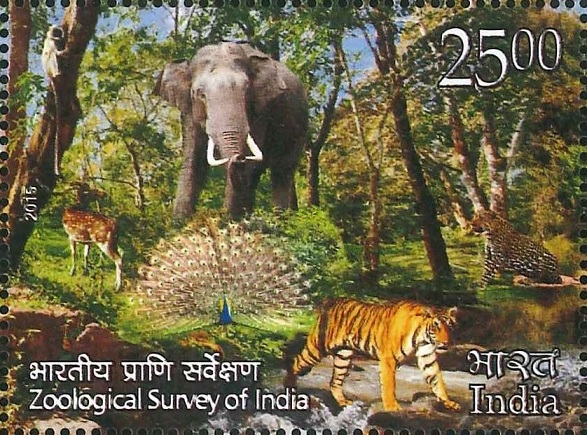

 Issued by India
Issued by India
Issued on Dec 3, 2015
Issued for : Department of Posts is happy to issue a commemorative postage stamp on the occasion of celebration of centenary year of Zoological Survey of India.
Credits :
Stamp/FDC/Miniature Sheet : Suresh Kumar
Cancellation : Alka Sharma
Type : Miniature Sheet, Mint Condition
Colour : Multi Colour
Denomination : 500 & 2500 Paise
Stamps Printed : 0.5 Million & 0.25 Million
Miniature Sheet : 0.1 Million (3000 p)
Printing Process : Wet Offset
Printer : Security Printing Press, Hyderabad
About :
- India is very rich in terms of biological diversity due to its unique biogeographical location, diversified climatic conditions and enormous ecodiversity and geodiversity. According to the world biogeographic classification, India represents two of the major realms (the Palaearctic and Indo-Malayan) and three biomes (Tropical Humid Forests, Tropical Dry/Deciduous Forests and Warm Deserts/Semi-Deserts). With only about 2.4% of world’s total land surface, India is known to have over 7.50% of the species of animals that the world holds and this percentage accounts for nearly about 92,000 species so far known.
- The Zoological Survey of India (ZSI) was established on 1st July, 1916 to promote survey, exploration and research leading to the advancement in our knowledge on various aspects of the exceptionally rich animal diversity of the Indian subcontinent. The survey has its genesis in the Museum of the Asiatic Society of Bengal (1814-1875) and the Zoological Section of the Indian Museum (1875-1916) in Kolkata. By gradually strengthening its staff and expanding its research programmes, the Survey has met the challenge of the past and is on its way to meet the demands of the future. The scope and functions of Zoological Survey of India have been considerably expanded, particularly in the light of the Convention on Biological Diversity, ratified by the Government of India in 1994. To meet the challenges of biodiversity conservation, sustainable utilization and dissemination of knowledge on faunal diversity to all stake holders, recently, the Survey has been working at augmenting its research infrastructure.
- With the increasing interest in the life sciences and with the advent of country’s Five Year Plans, the expansion programme of the survey was taken up. The Survey has established 16 Regional and Field Stations so far, and has developed into a major National Institution with its Headquarters at Kolkata. It functions as the guardian of the National Zoological Collections, containing over a million identified specimens from all animal groups ranging from Protozoa to Mammals. Extensive and intensive field explorations are undertaken by the survey in different parts of the country for the studies of fauna, systematic zoology, animal ecology, wildlife and zoogeography, animal behaviour, animal population and also marine fauna and the results of the explorations and research are published regularly in its own journals as well as National and International periodicals of repute. Recently efforts have been made towards an integrated approach to zoological investigations, so as to have more purpose oriented research comprising biological, cytotaxonomic, and ecological aspects.
- Zoological Survey of India has been monitoring services on population status of commercially important species of fauna and providing input for underutilized, culturable species both from terrestrial and aquatic systems. Zoological Survey of India also provides timely warning on declining population of species of commercial importance to ensure sustainable use of components of biological diversity.
- Besides regularly providing identification and advisory services to research establishments, including more than two hundred Universities in India, the Survey also provides short term trainings in the art of taxidermy to candidates sponsored by different organizations. It has continued to maintain its objectives of taxonomic research, survey and documentation of Indian fauna. It also organizes an annual training programme in collection, preservation and identification of insects and mites of economic importance.
- Zoological Survey of India is approaching 100 years of its service to the nation and is an important knowledge Bank for future India. It assists the Ministry of Environment & Forests, Government of India in the conservation of fauna of the country.
- Text : Based on the material provided by the proponent.



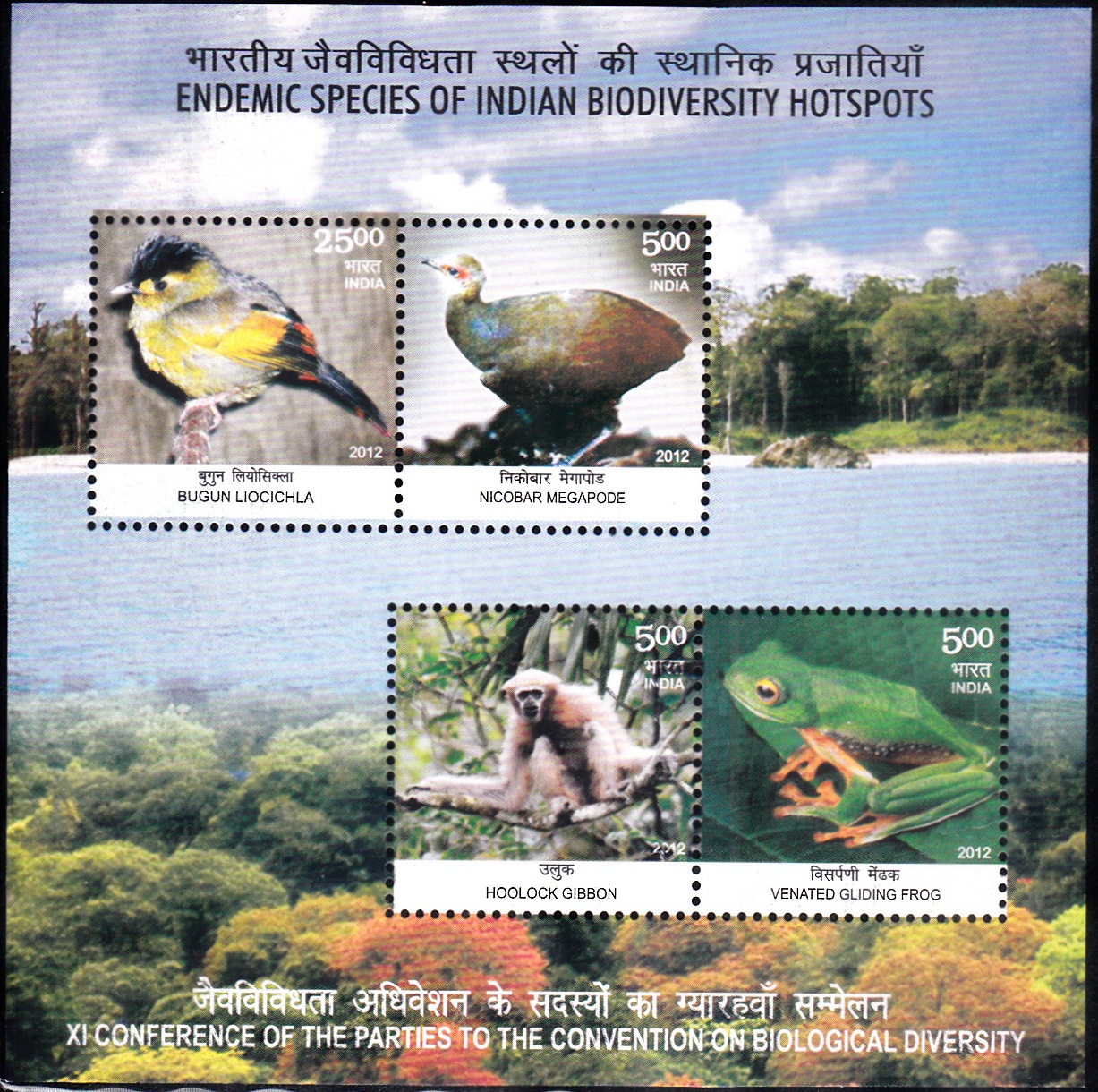
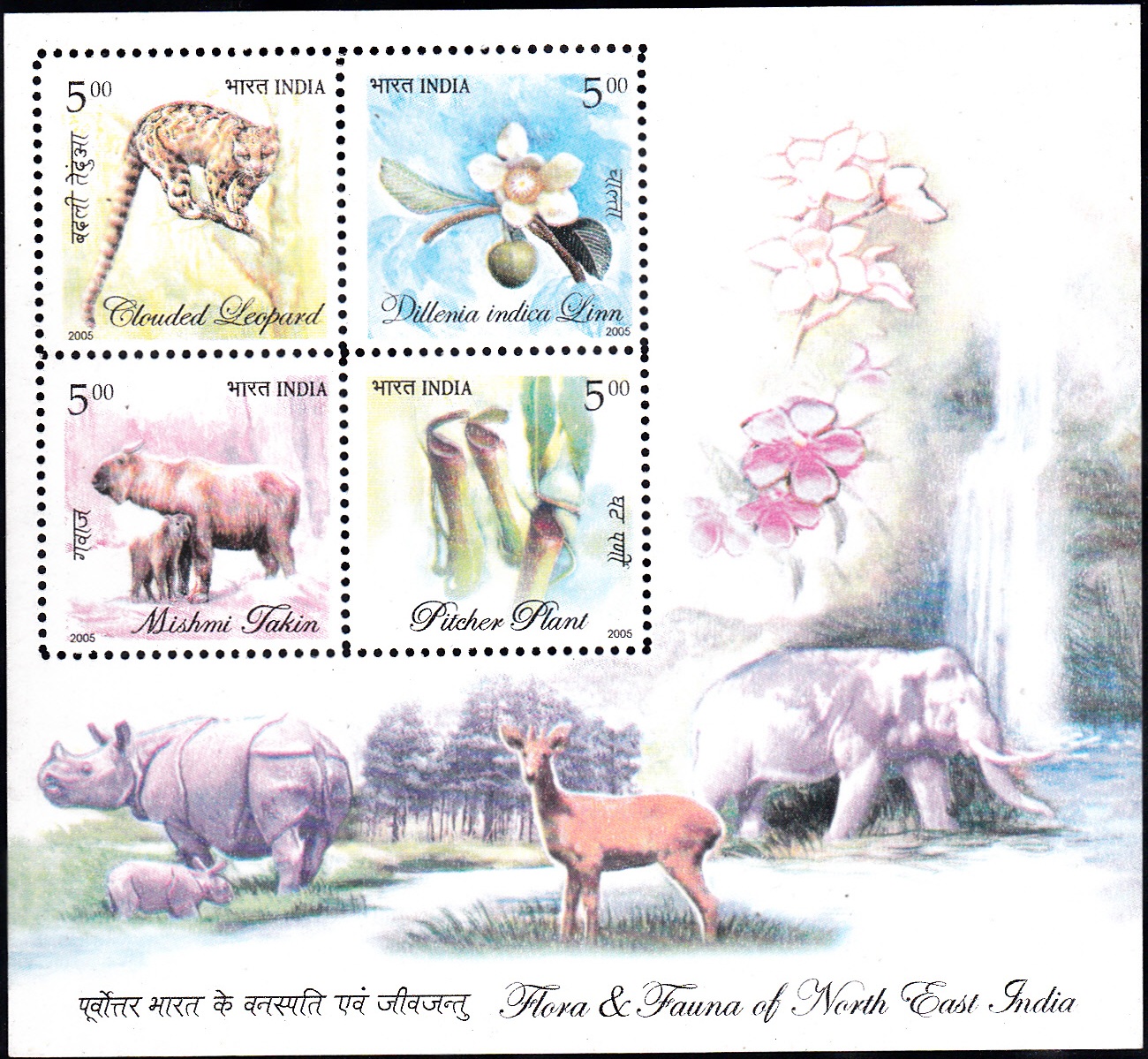
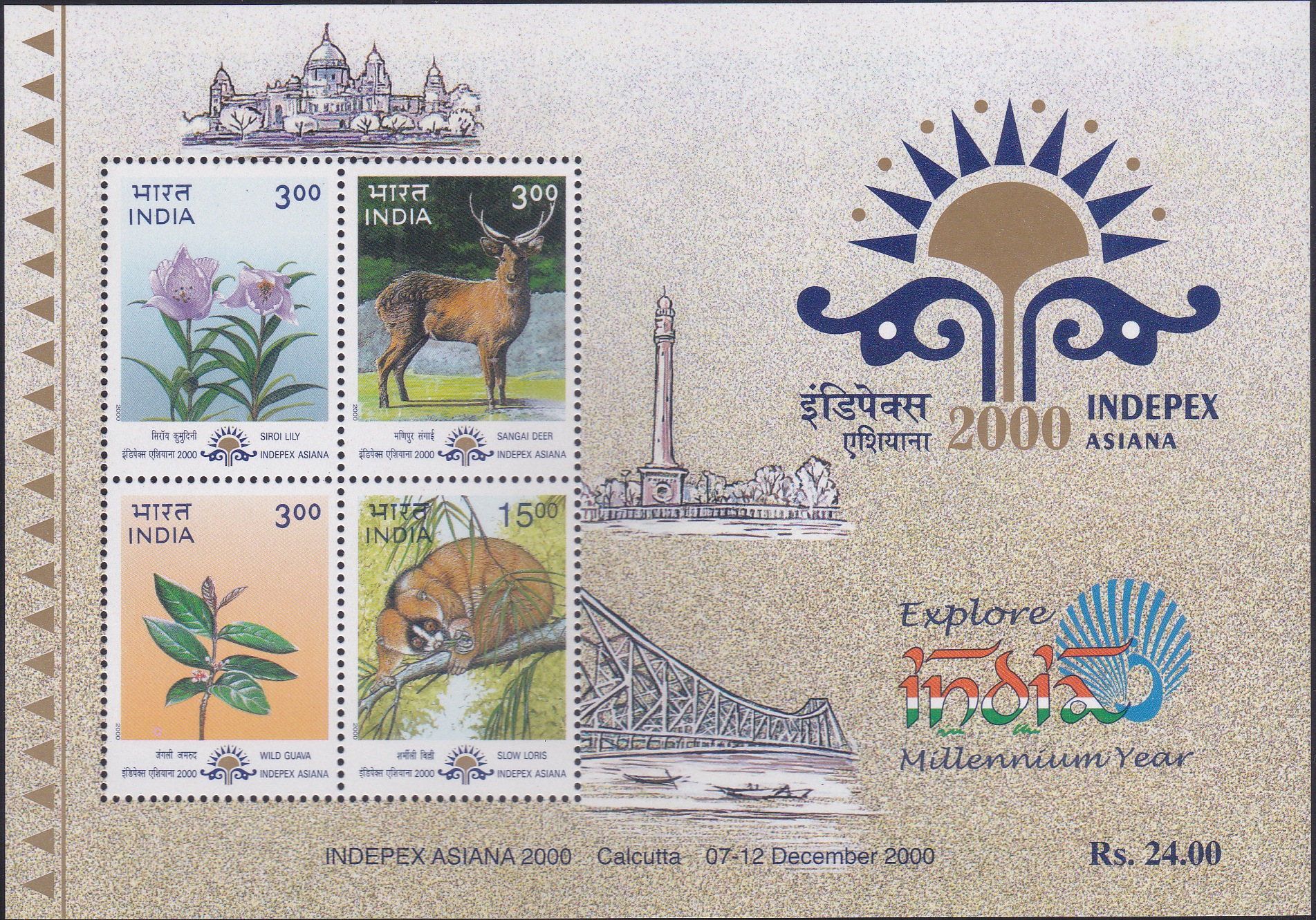


[…] 50,000 insect specimens and 3,000 reptiles is unparalleled in the country except, perhaps, by the Zoological Survey of India. Its Library has extremely valuable and rare books – making it an effective focal point for […]
[…] Birds: The Park is very rich in avifauna – Zoological survey of India have recorded over 585 species of resident and migratory birds. The newly created Ramganga […]
[…] Text : Based on material supplied by Zoological Survey of India. […]